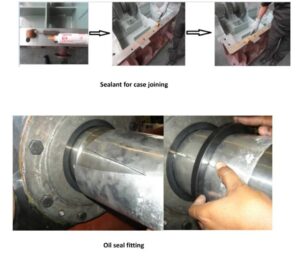Mobile:+86-311-808-126-83
Email:info@ydcastings.com
aluminum gravity casting
Understanding Aluminum Gravity Casting A Comprehensive Overview
Aluminum gravity casting is a popular and efficient metal casting process that utilizes the force of gravity to pour molten aluminum into a mold. This technique is widely used in various industries, including automotive, aerospace, and consumer goods manufacturing, due to its ability to produce high-quality, intricate shapes with excellent surface finishes. In this article, we will explore the fundamentals of aluminum gravity casting, its advantages, applications, and the future of this casting method.
The Process of Aluminum Gravity Casting
The gravity casting process involves several key steps. First, the aluminum alloy is melted in a furnace to reach a temperature where it becomes fluid enough to flow into a mold. Once the molten aluminum is ready, it is poured into a pre-designed mold, which is typically made from materials like iron, steel, or sand. The mold can be either a single-use or reusable type, depending on the production requirements.
Gravity plays a crucial role in this process. Instead of relying on external pressure or vacuum systems, the molten aluminum flows into the mold by the force of gravity. This method allows for better filling of intricate mold designs, resulting in components that are both accurate in shape and dense in structure. Once the aluminum cools and solidifies, the mold is removed, revealing the finished cast part.
Advantages of Aluminum Gravity Casting
One of the primary benefits of aluminum gravity casting is its cost-effectiveness. Compared to other casting methods like die casting, gravity casting often requires less investment in equipment and tooling. Additionally, the process typically generates less waste material, making it an environmentally friendly option for manufacturers.
Another significant advantage is the mechanical properties of the cast aluminum. The gravity casting process produces parts with excellent integrity and strength, which are vital in demanding applications such as automotive frames and engine components. The slower cooling rate associated with gravity casting also contributes to finer grain structures, enhancing the overall quality of the finished product.
Moreover, the versatility of aluminum gravity casting allows for a wide range of design possibilities. Complex shapes and detailed features can be achieved with high precision, making it suitable for custom applications. This adaptability is particularly valuable in industries that require specialized components, such as aerospace and medical equipment.
aluminum gravity casting

Applications of Aluminum Gravity Casting
The applications of aluminum gravity casting are vast and varied. In the automotive industry, components like engine blocks, transmission cases, and structural parts are commonly produced using this method. The lightweight nature of aluminum, combined with its strength, offers significant advantages in fuel efficiency and overall vehicle performance.
In the aerospace sector, aluminum gravity casting is employed to create critical components that must meet stringent safety and performance standards. Parts such as housing for avionics and structural supports are often manufactured using this technique. The ability to produce lightweight yet robust components is crucial for improving aircraft fuel efficiency.
Beyond transportation, aluminum gravity casting finds applications in hardware, electronics, and consumer goods. Products ranging from housings for electronic devices to decorative hardware can benefit from the precision and durability offered by this casting method.
The Future of Aluminum Gravity Casting
As industries continue to seek more efficient and sustainable manufacturing processes, aluminum gravity casting is likely to evolve. Technological advancements such as computer-aided design (CAD) and simulation software will enhance the design and optimization of molds, leading to even more intricate geometries and reduced production times.
Furthermore, as the demand for lightweight materials grows, particularly in electric vehicles and renewable energy sectors, aluminum gravity casting may see increased use. Innovations in alloy compositions and casting techniques could also improve the mechanical properties of the final products, making aluminum gravity casting an even more attractive option for manufacturers.
In conclusion, aluminum gravity casting is a vital and versatile metal casting process that offers numerous advantages for various industries. With its cost-effectiveness, ability to produce high-quality parts, and potential for future innovations, aluminum gravity casting will likely remain a cornerstone of modern manufacturing for years to come.
-
Why Should You Invest in Superior Pump Castings for Your Equipment?NewsJun.09,2025
-
Unlock Performance Potential with Stainless Impellers and Aluminum End CapsNewsJun.09,2025
-
Revolutionize Your Machinery with Superior Cast Iron and Aluminum ComponentsNewsJun.09,2025
-
Revolutionize Fluid Dynamics with Premium Pump ComponentsNewsJun.09,2025
-
Optimizing Industrial Systems with Essential Valve ComponentsNewsJun.09,2025
-
Elevate Grid Efficiency with High-Precision Power CastingsNewsJun.09,2025











